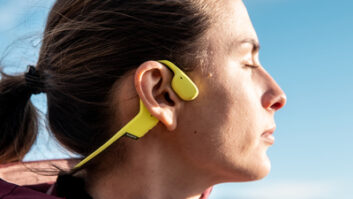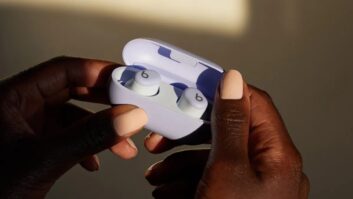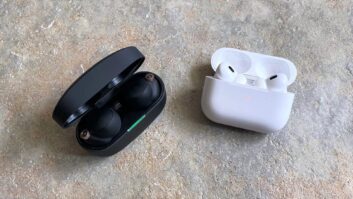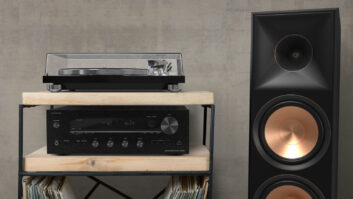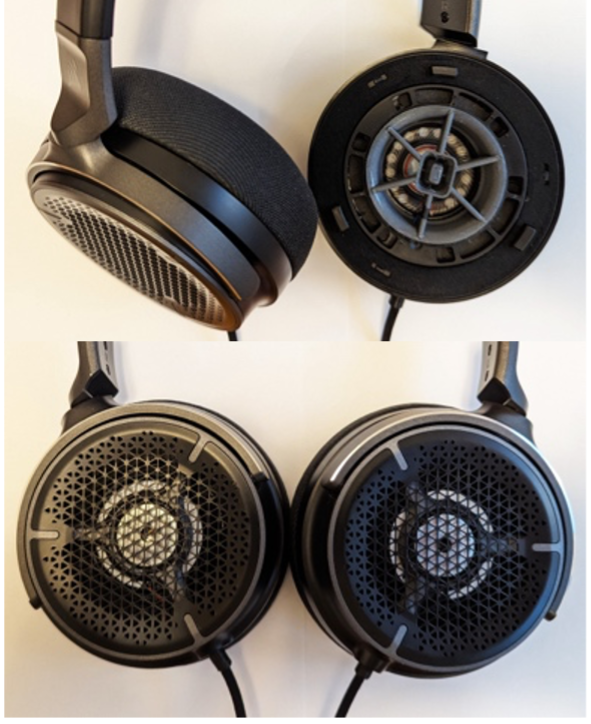
These days, even the most basic, compact, affordable bookshelf speakers have multiple drivers. Advances in driver design, plus sufficient room in speaker enclosures, have for years allowed manufacturers to at least separate the highs and mids from the bass to deliver a clearer, cleaner, more detailed listening experience.
Unfortunately, the same cannot be said of even the most advanced, single-driver headphones. Until now.
Having spent years in headphone R&D, I was attuned to something my son kept saying about his gaming headphones. When he played online with his friends, he had a hard time making out what others were saying over chat. To compensate, he turned up the volume — on everything. This kind of “fader creep” makes everything louder, but not clearer.

Of course, headphone designers have a lot of tools in their arsenal for optimizing audio. In my last job, we included a multi-band EQ that users could manipulate, maintaining several presets and loading them into their headphones. Depending on the desired listening experience, we in the headphone industry often see 50-millimeter drivers, larger-than-usual coils, bigger magnets, graphene, and carbon fiber materials — each introduced to enhance or overcome a core issue: that it’s really hard to make a single driver sound great.
But what if we didn’t have to? What if we could design a 2-way headphone? Advances in solid-state speaker technology hold the key.
The Power of Solid-State Speakers
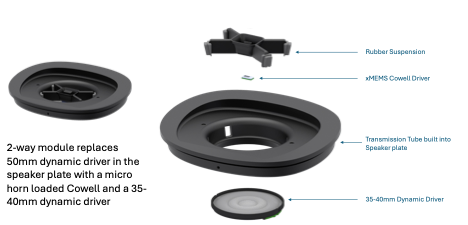
Just as solid-state microphones took over that market in the last decade, solid-state MEMS speakers are set to redefine personal audio. Printed in a single piece of silicon, solid-state micro speakers allow us to imagine a 2-way headphone design in which the highs and mids are precisely rendered by this new type of miniature tweeter, while the low end is handled through a smaller-than-usual, 35 or 40-millimeter dynamic driver.
The upside for headphone designers includes improved mid- and high-end frequency rendering, for cleaner vocals and spatial imaging; less weight, for better-wearing comfort; and much simpler back-volume acoustic tuning, for faster time to market. And despite including the latest in solid-state technology, the bill of materials doesn’t need to go up in price. When replacing graphene or other exotic material dynamic drivers with this simple 2-way system, several dollars can be shaved from the bill of materials.
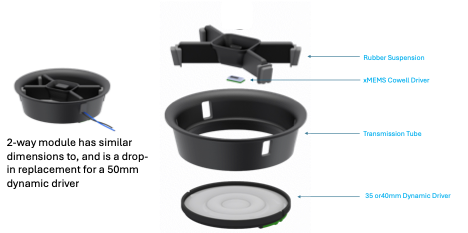
In my previous role overseeing headphone R&D, I was introduced to solid-state speakers from xMEMS, thinking, “What can I do with this tiny, little speaker?” It’s difficult, as other designers would attest, to explore new technologies among tight engineering resources, budgets, and product timelines. So, I started looking into the technology on my weekends. And here’s what I found:
The xMEMS solid-state speaker sounded clearer. Solid-state speakers are voltage-driven, not current-driven like traditional coil speakers, so they’re capable of ultra-fast impulse response, without any of the sound coloration of traditional transducers.
They’re capable of near-zero phase shift, whereas most dynamic drive coil speakers can commonly be as much as 180° out of phase between the left and right earcup. This means the sound stage or stereo image has incredible accuracy which greatly helps with clarity whether you are listening at low, medium, or high volumes.
And because of the way these solid-state speakers are manufactured, their phase consistency is near perfect. Not only does this minimize the calibration required to match left and right speakers, but it also ensures enhanced sound resolution and accuracy in spatial audio applications.
Reference Design for 2-Way Headphones

Since my introduction to solid-state speakers, I’ve become convinced of their potential. I’ve joined xMEMS to help develop a reference design for 2-way headphones, utilizing an xMEMS micro speaker. We’ve created a design that combines a small dynamic driver with an xMEMS Cowell solid-state tweeter into an earcup weighing just 12g (24g a pair) — at least one-third less than comparable gaming headphone earcups.
This 2-way design produces exceptional sound quality from 20Hz to 20kHz, with a crossover at 3.5 kHz. As tested, the Cowell tweeter easily reaches 40kHz with no drop in SPL. It’s easier to tune acoustically because headphone designers need only tune the dynamic driver in the 20Hz to 4kHz range, accelerating time to market. Plus, there is no need for an acoustic chamber added to the back of the earcup to tune the high frequencies of the xMEMS driver which helps to reduce weight and assembly time.
In creating a 2-way headphone design, we’ve decoupled the highs and mids from the bass, enabling clearer, high-resolution sound and faster, cheaper manufacturing. Despite the additional parts needed for a 2-way design, the overall BOM cost can actually be less expensive for medium and high-end headphones.
Since there are many 35-40mm dynamic drivers that have an excellent response from 20Hz-4kHz, the 2-way system requires much less space in the ear cup. Not only is the driver smaller, but as I said earlier, the design doesn’t require an acoustic chamber, which means headphone designers can opt for bigger batteries or other electronics. Or they can just make their designs smaller, lighter, sleeker, and more brand-defining, while still delivering an overall better audio experience.
Future Possibilities
The xMEMS 2-way headphone design is flexible, supporting both open-back and closed-back headphones. It’s modular, so it can be plugged into pretty much any headphone design.
Which, as a longtime R&D guy, I’ve been doing a lot lately. With the 2-way module installed, tuning the EQ takes hours instead of months. Working with one manufacturer, we swapped out a graphene driver for the 2-way module and achieved better response through tuning in only four hours.
That kind of development speed and flexibility will prove disruptive going forward. Headphone designers can more rapidly, and cost-effectively roll out variations of new products — open-back, closed-back, wired, wireless — as the market demands. Or imagine a lineup of modular headphones with attachable/detachable earcups that users swap depending on what they’re listening to.
And because the xMEMS 2-way design offers such rich, clear sound quality up to 40kHz (and easily beyond), distinctions among studio, gaming, and consumer headphones begin to fade. No matter the design, 2-way headphones can sound better than anything now available. No large drivers required; no exotic, expensive materials; no giant earcups. The state of future headphone design is solid-state.
About the Author
Neal Breitbarth is Audio Applications Director at xMEMS, the inventors of the world’s first solid-state True MEMS speakers for TWS earbuds, headphones and other personal audio devices. Before joining xMEMS, Breitbarth was Director of Research at Turtle Beach, where he spent over eight years in headphone R&D.
See also: Shure Releases New Nexadyne Dynamic Vocal Microphones






